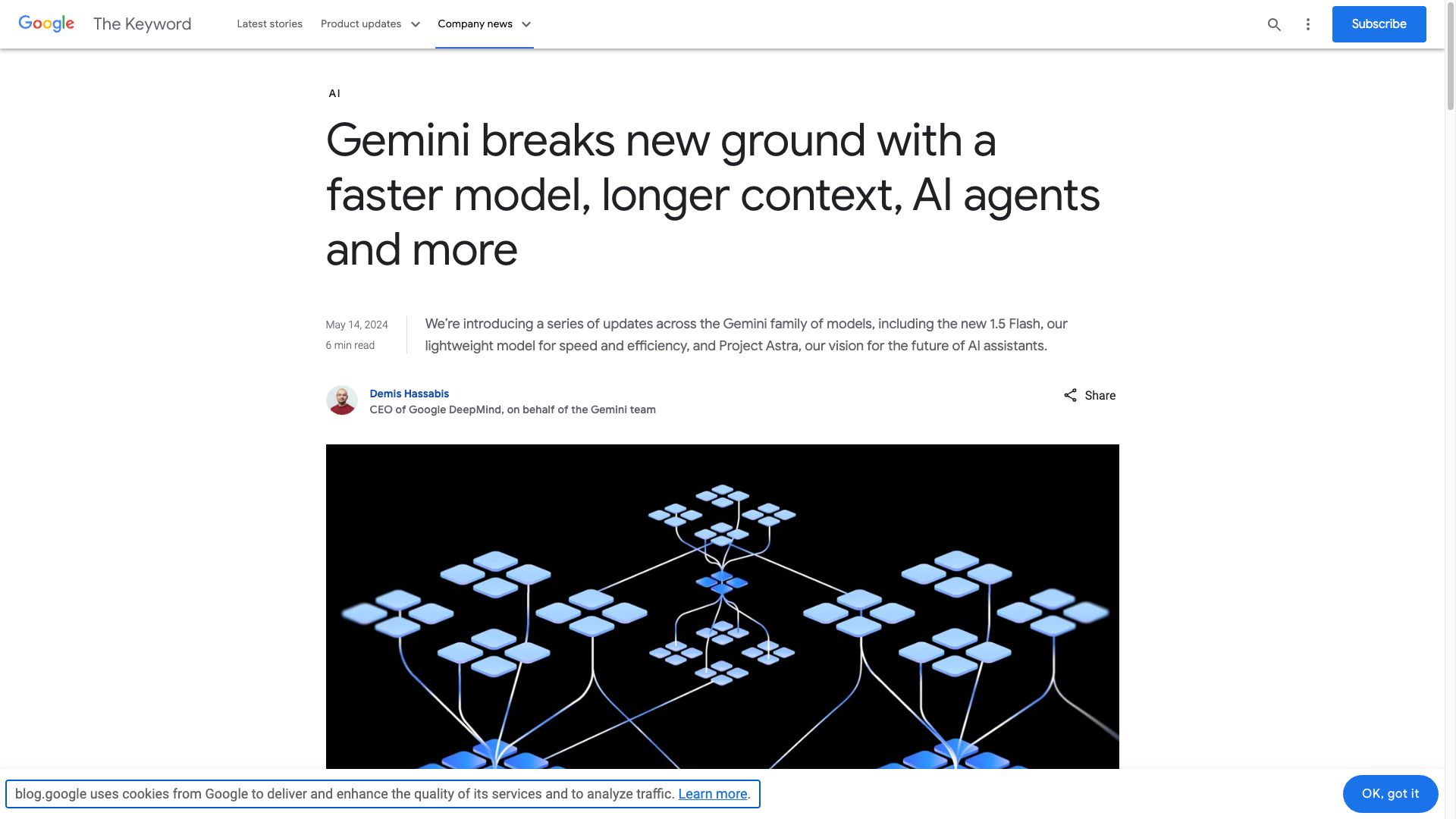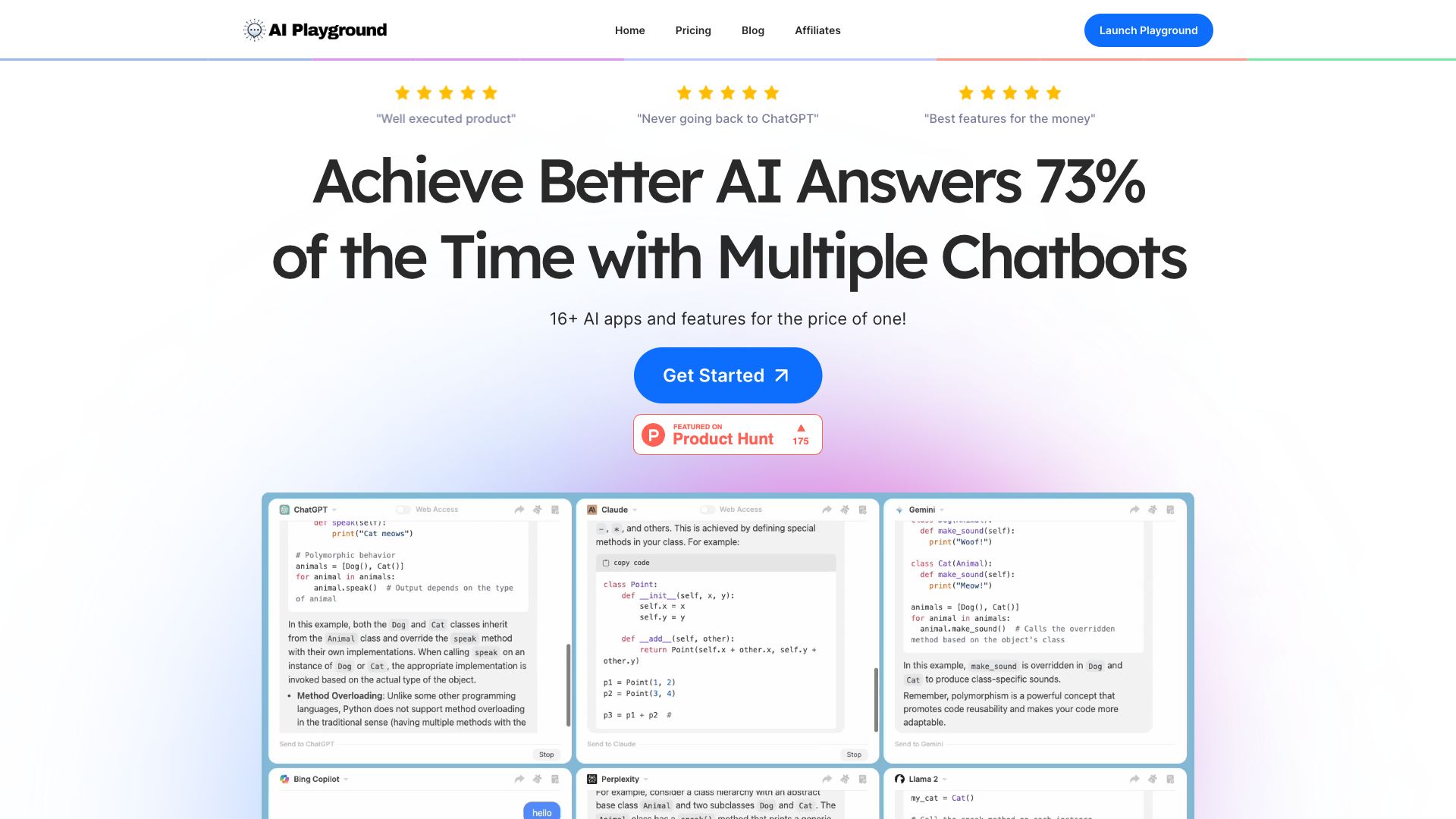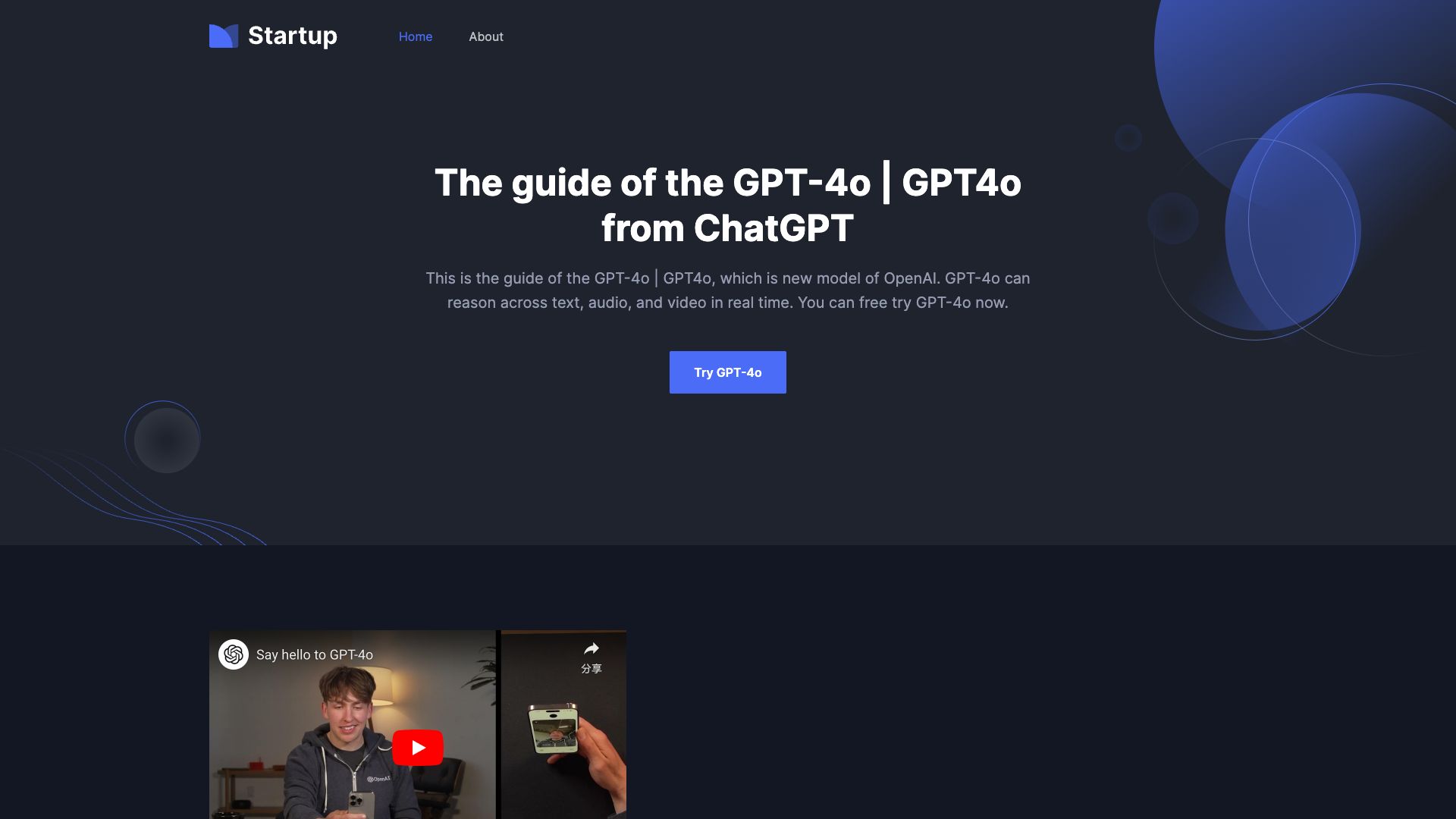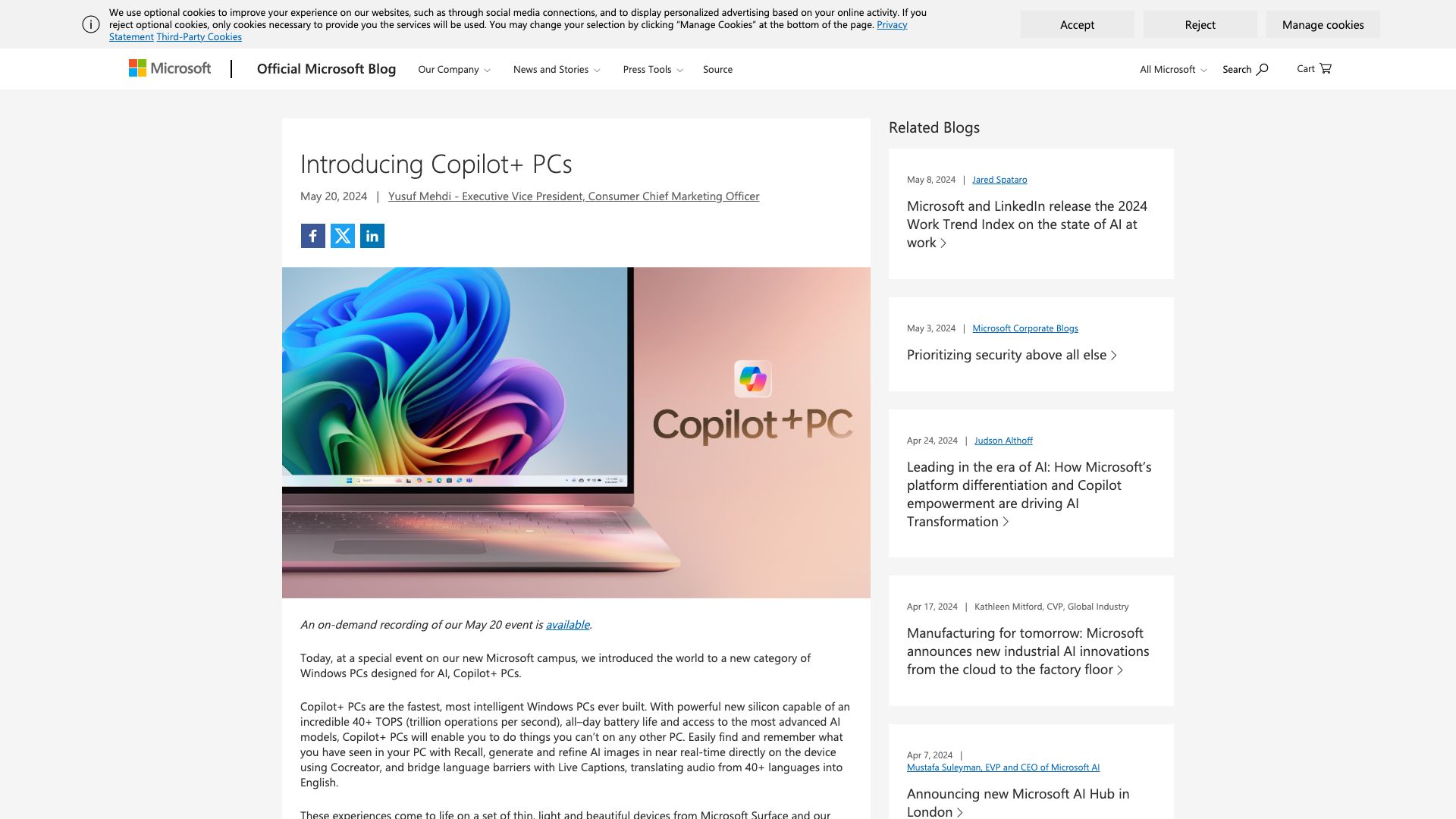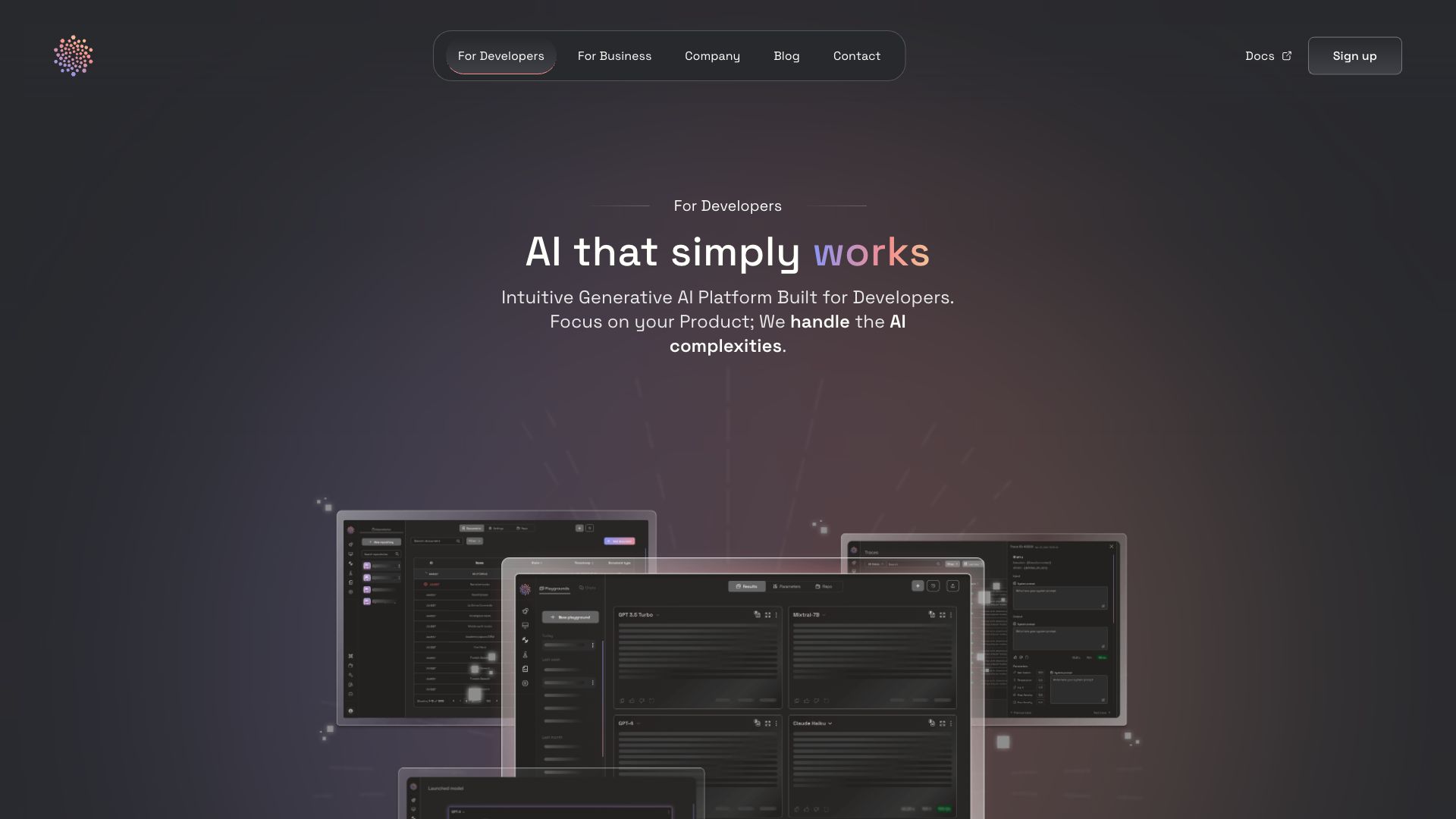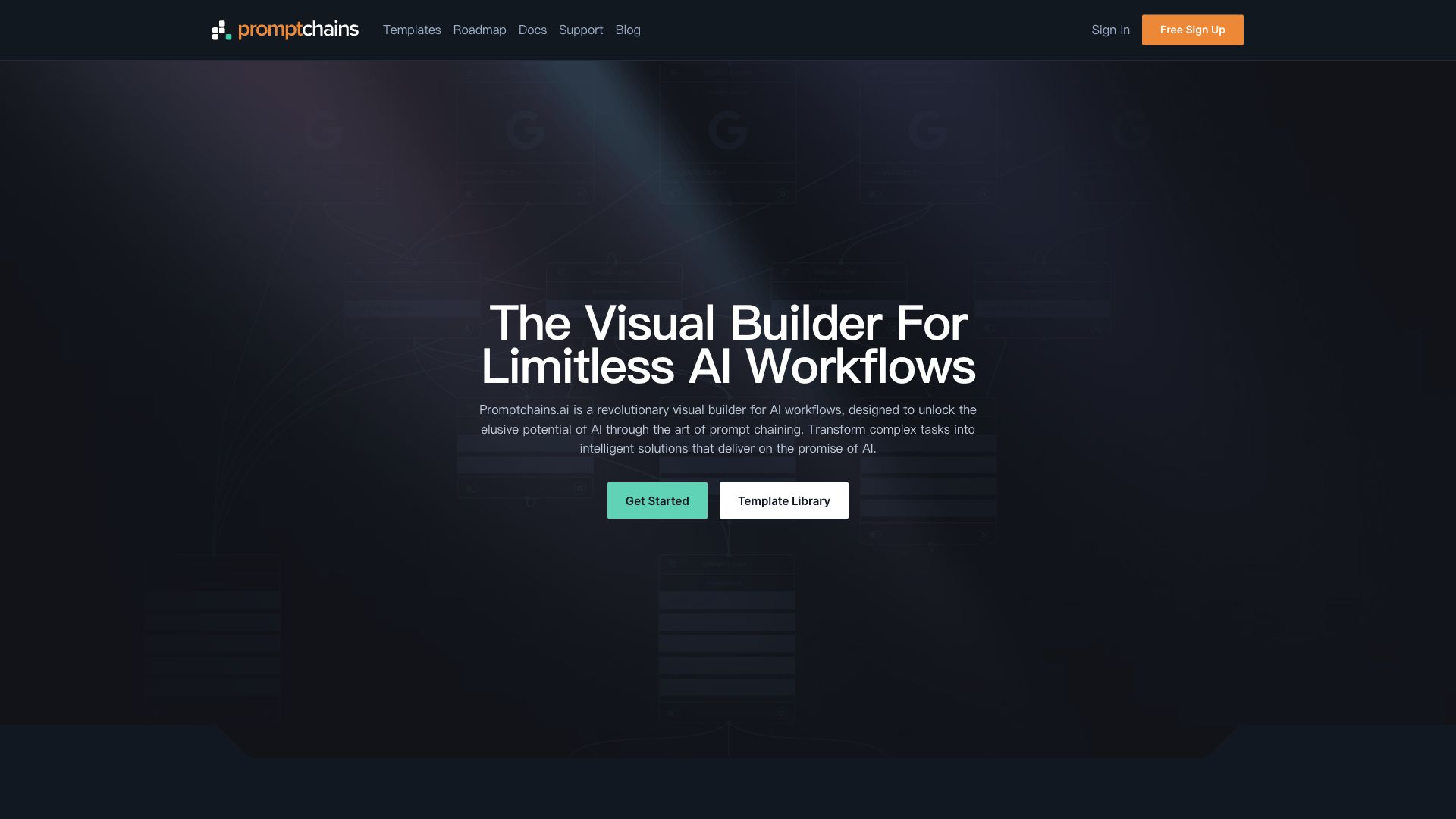Awesome Large Language Models (LLMs) Tools in 2024
Discover the awesome 7 AI tools for 2024 By Candytools
We’re sharing updates across our Gemini family of models and a glimpse of Project Astra, our vision for the future of AI assistants.
Interact with multiple AI chatbots like ChatGPT, Google Gemini, Claude 3, Bing Copilot, Llama, & Perplexity. Enhance your chatbot experience now!
Visit The GPT-4o | GPT4o for the new model of OpenAI, which can reason across text, audio, and video in real time.
Copilot+ PCs are the fastest, most intelligent Windows PCs ever built. With powerful new silicon capable of an incredible 40+ TOPS (trillion operations per second).
Accelerating the advent of personalized LLMs.
Free GPT 4o: ChatGPT4o.ai offers a free, user-friendly online chat interface for intelligent conversations.
PromptChains is a Python framework for building robust and scalable LLM applications. Simplify complex workflows, manage prompts effectively, and unlock the true potential of large language models.
More AI Tools Categories
What is Large Language Models (LLMs)?
Large Language Models (LLMs) are a type of artificial intelligence (AI) system that excels at understanding and generating human-like text. They are designed to process and generate text that is similar to what a human would write or say.
Here's a breakdown:
1. What are they?
- Neural Networks: LLMs are built using deep learning algorithms, specifically neural networks, with a vast number of parameters (often billions or even trillions).
- Trained on Massive Datasets: They are trained on massive amounts of text data, such as books, articles, code, and conversations, allowing them to learn patterns of human language.
- Statistical Learning: LLMs learn statistical associations between words and concepts, enabling them to predict the next word in a sequence or generate entire paragraphs of coherent text.
2. What can they do?
- Text Generation: Write stories, poems, articles, summaries, and even code in various programming languages.
- Language Translation: Translate text between languages with high accuracy.
- Question Answering: Understand and respond to questions, providing concise and informative answers.
- Dialogue and Conversation: Engage in natural-sounding conversations, acting as chatbots or virtual assistants.
- Text Summarization: Condense large amounts of text into concise summaries, highlighting key points.
- Code Generation: Write code in various programming languages based on natural language instructions.
3. How do they work?
- Word Embeddings: LLMs represent words as numerical vectors, capturing their meaning and relationships to other words.
- Transformer Architecture: Many LLMs use a transformer architecture, which allows them to process text sequences more efficiently and capture long-range dependencies between words.
- Attention Mechanism: Attention mechanisms help LLMs focus on the most relevant parts of the input text when generating output.
4. Examples of LLMs:
- GPT-3 (Generative Pre-trained Transformer 3): Developed by OpenAI, GPT-3 is one of the most well-known and powerful LLMs.
- LaMDA (Language Model for Dialogue Applications): Google's LLM focused on conversational AI and dialogue generation.
- BERT (Bidirectional Encoder Representations from Transformers): Google's LLM used for tasks like question answering and text classification.
- Jurassic-1 Jumbo: A large language model developed by AI21 Labs.
5. Benefits of LLMs:
- Human-like text generation: LLMs can generate highly creative and coherent text that is often indistinguishable from human-written text.
- Versatility: They can be applied to a wide range of language-based tasks.
- Efficiency: They can automate many tasks that previously required human effort.
6. Challenges of LLMs:
- Bias and Fairness: LLMs can reflect biases present in the data they were trained on, leading to potentially harmful outputs.
- Factual Accuracy: LLMs can sometimes generate inaccurate or misleading information.
- Lack of Common Sense: LLMs may lack common sense reasoning abilities that humans possess.
LLMs are a rapidly evolving field of AI research with the potential to revolutionize how we interact with and use language. They are already being integrated into various applications, from search engines to chatbots, and their capabilities are constantly improving.
